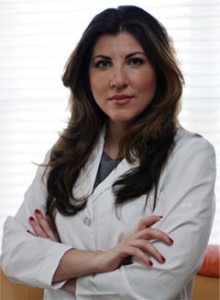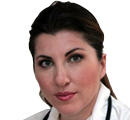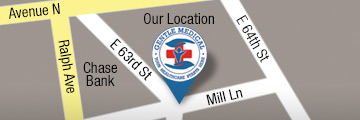Do You Need A Doctor’s Appointment For Burns (First Degree Burns, Second Degree Burns)?
Posted by admin on July 30th, 2013

“Even minor burns can be quite painful. Although most minor burns can be managed at home, a large second degree burn often needs medical attention. Third degree burns should be seen in the emergency room, but all other burns can be managed here in the clinic. If you have suffered a burn and are experiencing pain, or the burn is deep and has blistered, make an appointment to have your burn evaluated.”
-Dr. Zimilevich, MD
The Skin
In order to discuss burns, it’s helpful to have an understanding of how the skin is layered. This makes it easier to understand how burns are classified.
The top layer of the skin is called the epidermis. It consists of three layers and contains melanocytes, which are the cells that produce skin pigment (melanin). Just under the epidermis is the dermis, a thicker layer containing sweat glands, hair follicles, nerves and blood vessels, all held together by collagen. The dermis is what gives our skin its strength and stretchiness. Touch and pain receptors are also found in the dermis. Under the dermis is the subcutaneous layer, or hypodermis, which is formed from a network of fat cells and collagen. It acts as a sort of shock absorber and helps us to stay warm. Under theses layers are the muscles, bones, ligaments, cartilage and joints.
Our skin serves many functions. It acts as a barrier, protecting us from injury, infection and dehydration. It is also a sensory organ- without skin we could not feel. Your skin is your largest organ. It is thickest on the soles of your feet and thinnest on your eyelids.
What is a burn?
A burn is simply an injury to the skin caused by heat (thermal burns), chemicals, electricity, radiation or friction. Burns can be further classified according to source i.e. heat, or thermal burns, may be caused by fire or hot water (scalds). All burns, no matter their source, cause some degree of damage to the skin.
Degrees of burns
You have probably heard of burns described in terms of degrees. Here is what the terms first, second and third degree burn means:
- First degree burns affect only the epidermis. The skin is reddened, dry, painful or tender to touch and may be slightly edemetous (swollen). A sunburn is a good example of a first degree burn. These mild burns generally heal in a week or so.
- Second degree burns affect the epidermis and the dermis. They are sometimes subdivided into superficial second degree burns or deep second degree burns, depending on how much of the dermis is damaged. Obviously, the deeper the burn the greater the severity. Second degree burns are moist or dry (depending on depth) and usually painful because nerves are affected (remember that the dermis houses nerve endings). There will be swelling and blister formation. Second degree burns take longer to heal (anywhere from a few weeks to 2 months) and may cause permanent scarring. Severe second degree burns may require skin grafting.
- Third degree burns involve all the layers of the skin. The skin may appear white and leathery or charred. Pain may be less because nerves are destroyed (but this doesn’t mean there will be no pain because burns are often “mixed” with areas of second and third degree burns in close proximity). These burns are life-threatening because the loss of skin puts the victim at risk of massive fluid loss and infection. Skin grafting is necessary. Amputation may also be necessary. Healing may take many months and there is always scarring.
Burns are also sometimes described as partial-thickness or full-thickness, depending on the depth of the burn and layers affected.

First aid at home
For first degree burns or second degree burns that are no larger than 3 inches in diameter:
- cool the burn- run the affected area under cool running water for several minutes or apply a cloth or towel soaked in cool water to the affected area
- cover the burn with a dry, clean dressing to prevent infection and reduce pain (don’t use any material such as cotton batting that may leave material in the wound)
- use an over-the-counter pain reliever for pain (do not give aspirin to children under 12 years of age)
Do not apply butter or other greasy agents to the burn- this may cause infection. If blisters are present, do not break the blisters- allow them to break on their own. Lastly, do not apply ice to the area as this may further damage the skin.
If you have a second degree burn that is larger than 3 inches in diameter or a third degree burn, you should seek medical attention right away. If someone you know has been burned over a large part of their body call an ambulance so that they can be transported to the nearest emergency room.
What can I expect if I need to come in because I have burned myself?
If you have burned yourself, you need to come in as soon as possible after being injured. I will ask about your medical history, any medications you are taking and whether you are allergic to any medications. You will need to tell me how you were burned and how long it has been since the injury occurred. I will examine the burned area to determine the severity of the burn. Depending on the extent of the burn, I may prescribe an antibiotic ointment or oral antibiotic if I am concerned about infection. You may need daily dressing changes- if this is the case, I will instruct you on how to perform the dressing change or make arrangements for daily dressing changes. In some cases, you may also need a tetanus shot if you have not had one for a while. If necessary, I may refer you to a specialist (plastic surgeon).
If you have suffered a burn, call to make an appointment as soon as possible. In most cases, we can see you very quickly. Doing so may prevent infection and other complications.
Our Location

6301 Mill Lane, Brooklyn, NY 11234.
(718) 942-4600



